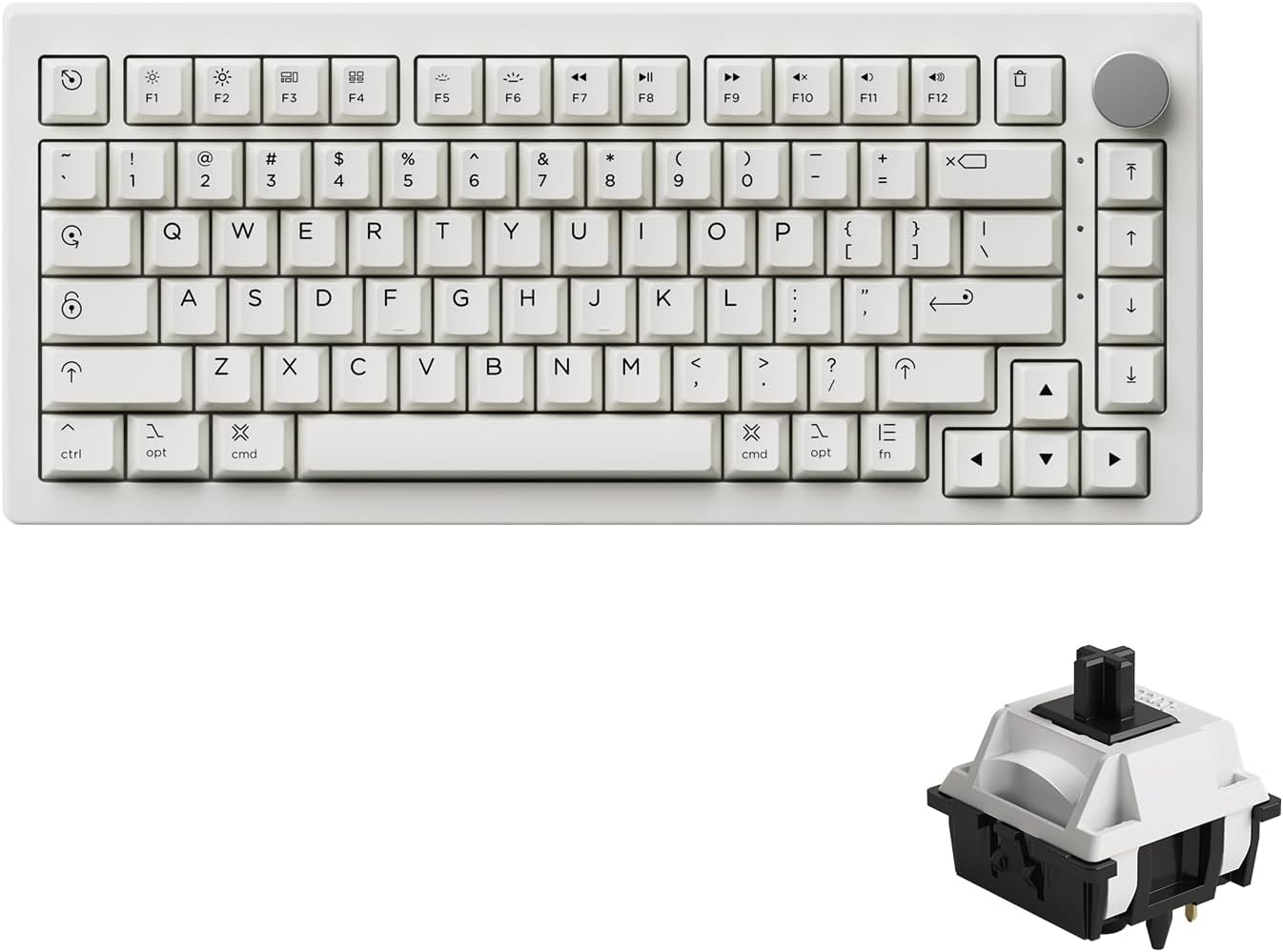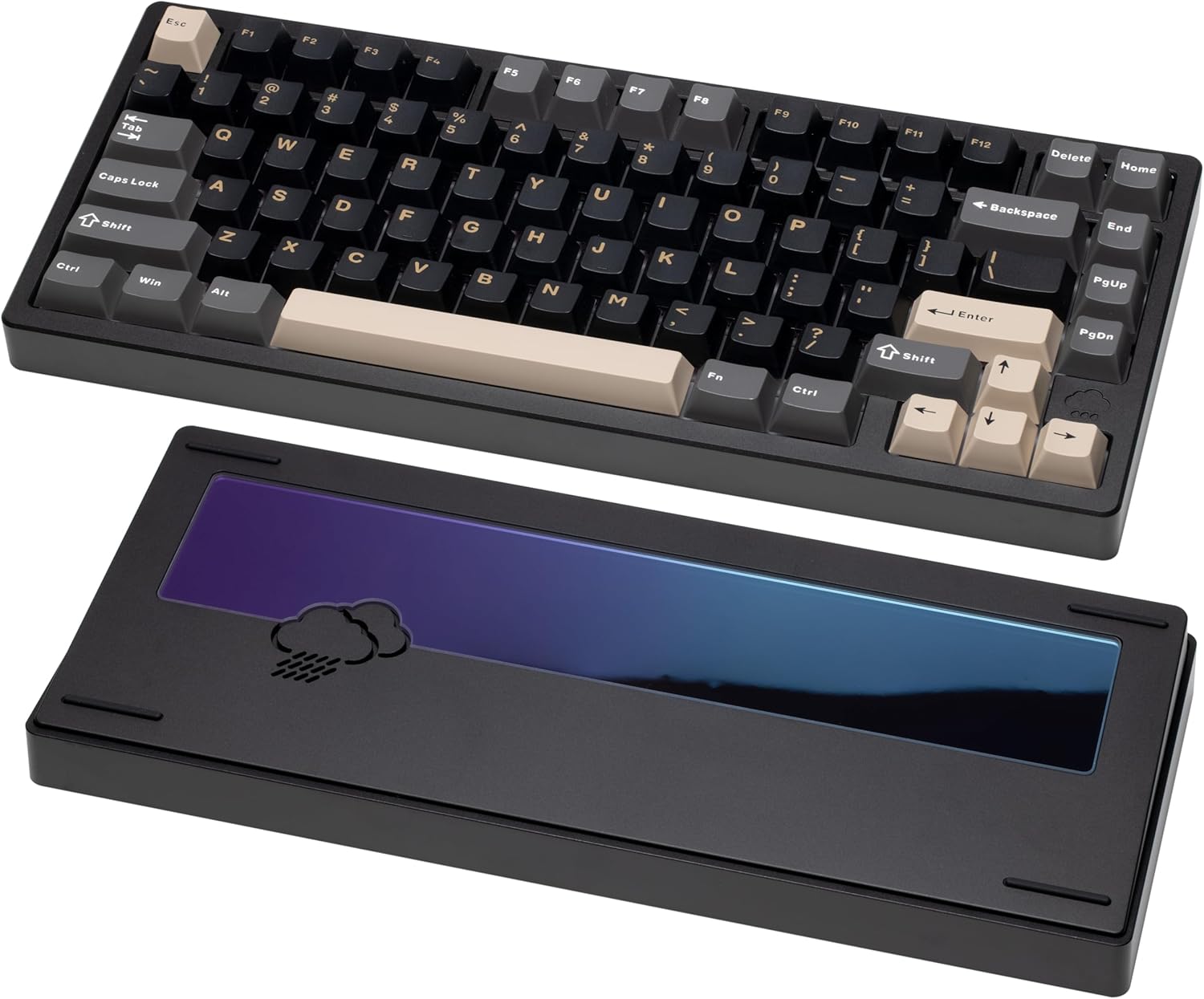Mechanical Keyboard Switch Types and How to Choose Yours
So, you're diving into the world of mechanical keyboards? Welcome! One of the first (and most crucial) decisions you'll make is choosing the right type of switch. The switches are what give a mechanical keyboard its unique feel and sound. This guide will break down the main switch types and help you find the perfect match for your typing style.
Understanding Mechanical Keyboard Switches
Mechanical keyboard switches are the individual components under each keycap that register a keypress. Unlike membrane keyboards that use a rubber dome, mechanical keyboards use physical switches, offering a more tactile and responsive typing experience. They're also much more durable and customizable.
Key Characteristics to Consider
- Actuation Point: The distance the key needs to be pressed for the switch to register the input.
- Tactile Feedback: A bump or click you feel when the key actuates.
- Actuation Force: The amount of force required to press the key.
- Sound Profile: How loud or quiet the switch is.
- Travel Distance: The total distance the key travels from its resting position to the bottom.
The Main Switch Types
There are three main types of mechanical keyboard switches: linear, tactile, and clicky.
1. Linear Switches
Linear switches offer a smooth, consistent keypress with no tactile bump or audible click. They're known for their speed and responsiveness, making them popular among gamers.
- Characteristics: Smooth, consistent keypress, no tactile feedback, quiet (depending on the switch).
- Pros: Fast actuation, ideal for rapid key presses, generally quieter than other types.
- Cons: Lack of tactile feedback can lead to typos for some users.
- Popular Examples: Cherry MX Red, Cherry MX Black, Gateron Yellow, Gateron Red.
Product Spotlight: Keychron K2 HE
Speaking of responsiveness, the Keychron K2 HE takes it to another level with its Hall-Effect Gateron double-rail magnetic switches. These switches allow for ultra-responsive input and customizable actuation points as low as 0.1 mm! Imagine the speed and precision you'd get. It's not just about gaming, either; that level of responsiveness can seriously boost your productivity. Plus, with its sleek aluminum and wood frame, it looks fantastic on any desk. If you are looking for a high-performance keyboard, this is the one.

Who it's for: Gamers and typists who prioritize speed and responsiveness.
2. Tactile Switches
Tactile switches provide a noticeable bump when the key actuates, giving you feedback that the keypress has been registered. They're a good middle ground between linear and clicky switches and are favored by many typists.
- Characteristics: Tactile bump, moderate noise level.
- Pros: Provides feedback without being too loud, reduces typos, comfortable for long typing sessions.
- Cons: Not as fast as linear switches, can be fatiguing for some.
- Popular Examples: Cherry MX Brown, Cherry MX Clear, Gateron Brown.
Product Spotlight: EPOMAKER EA75
If you're looking for a tactile experience with a bit more customization, check out the EPOMAKER EA75. This keyboard features factory-lubed switches and a gasket-mounted design, offering a smooth and quiet typing experience. The tactile bump is there, but it's not overly aggressive, making it comfortable for extended use. Plus, with its tri-mode connectivity, you can easily switch between devices. The rotary knob is a nice touch, too!

Who it's for: Writers, programmers, and anyone who wants a comfortable and accurate typing experience.
3. Clicky Switches
Clicky switches are the loudest and most tactile of the three types. They provide both a tactile bump and an audible click when the key actuates. They're loved by those who enjoy the satisfying sound and feel of each keypress.
- Characteristics: Tactile bump, audible click, loud.
- Pros: Very satisfying to type on, provides clear feedback, nostalgic feel.
- Cons: Can be disruptive in quiet environments, not ideal for shared workspaces.
- Popular Examples: Cherry MX Blue, Cherry MX Green, Kailh BOX White.
Other Switch Considerations
Beyond the main types, there are a few other factors to keep in mind when choosing a switch.
Actuation Force
The actuation force is the amount of pressure you need to apply to the key for it to register. Lighter switches (like Cherry MX Red) require less force, while heavier switches (like Cherry MX Black) require more. Your preference will depend on your typing style and hand strength.
Travel Distance
The travel distance is how far the key travels from its resting position to the bottom. Some switches have a shorter travel distance, which can lead to faster actuation. Others have a longer travel distance, which can provide a more substantial feel.
Switch Mounting Style
The mounting style refers to how the switch is attached to the keyboard's plate. The two most common mounting styles are plate-mounted and PCB-mounted. Plate-mounted switches are more secure, while PCB-mounted switches can offer a slightly softer feel.
Finding the Right Switch for You
The best way to find the right switch for you is to try out different types. If possible, visit a local electronics store or keyboard meetup to test out different keyboards. You can also purchase a switch tester, which contains a variety of different switches for you to try. Here are some recommendations based on your needs:
Product Spotlight: AULA F99
If you want to try out different switches, the AULA F99 is a great choice because it's hot-swappable. This means you can easily replace the switches without soldering. The AULA F99 also has a compact 96% layout, which gives you almost all the keys of a full-size keyboard in a smaller footprint. Plus, its gasket-mounted structure and five-layer sound dampening make for a comfortable and quiet typing experience. It's a great all-around keyboard for anyone looking to experiment with different switches.

Who it's for: People who want to try different switches and want a good all-around keyboard.
Product Spotlight: Akko 5075B Plus Air
If you're a Mac user looking for a keyboard with a similar aesthetic, the Akko 5075B Plus Air is a great option. It features a Mac-themed design, hot-swappable sockets, and durable PBT dye-sub keycaps. Plus, it supports tri-mode connectivity, so you can easily switch between your Mac, iPad, and iPhone. The customizable knob is a nice touch, too.

Who it's for: Mac users who want a stylish and functional mechanical keyboard.
Product Spotlight: WOBKEY Rainy 75
For those who appreciate a minimalist design and a premium typing experience, the WOBKEY Rainy 75 is an excellent choice. Its solid aluminum case, five-layer acoustic dampening, and gasket-mounted design provide soft, quiet keystrokes. The tri-mode connectivity makes it adaptable for any setup, and the hot-swappable switches allow for easy customization. It's a refined, customizable experience ideal for both work and play.

Who it's for: Users who value aesthetics and a quiet, comfortable typing experience.
Recommendations Based on User Type
- Gamers: Linear switches (like Cherry MX Red or Gateron Yellow) for fast actuation and responsiveness.
- Typists: Tactile switches (like Cherry MX Brown or Gateron Brown) for feedback and accuracy.
- Programmers: Tactile switches (like Cherry MX Brown or Cherry MX Clear) for comfort during long coding sessions.
- Office Workers: Quieter switches (like Cherry MX Silent Red or Gateron Silent Brown) to minimize noise.
Visual Aids and Demos
To enhance your understanding, consider exploring these resources:
- Switch Charts: Search for visual switch charts that compare actuation force, travel distance, and sound profiles.
- Layout Diagrams: Look at diagrams illustrating different keyboard layouts (e.g., 60%, 75%, TKL) to see how they affect switch accessibility.
- Video Demos: Find videos demonstrating the sound and feel of various switches. YouTube is a great resource.
Conclusion
Choosing the right mechanical keyboard switch is a personal decision. Consider your typing style, preferences, and environment when making your choice. Don't be afraid to experiment with different switches until you find the perfect fit. Happy typing!
Ready to take the plunge and upgrade your typing experience? Explore the links above to find the perfect mechanical keyboard for your needs. And don't forget to share your thoughts and experiences in the comments below!
Mechanical Keyboard Starter Guide
Ever wanted to learn about or build your own mechanical keyboard? This guide will show you everything you need to know.
Learn More